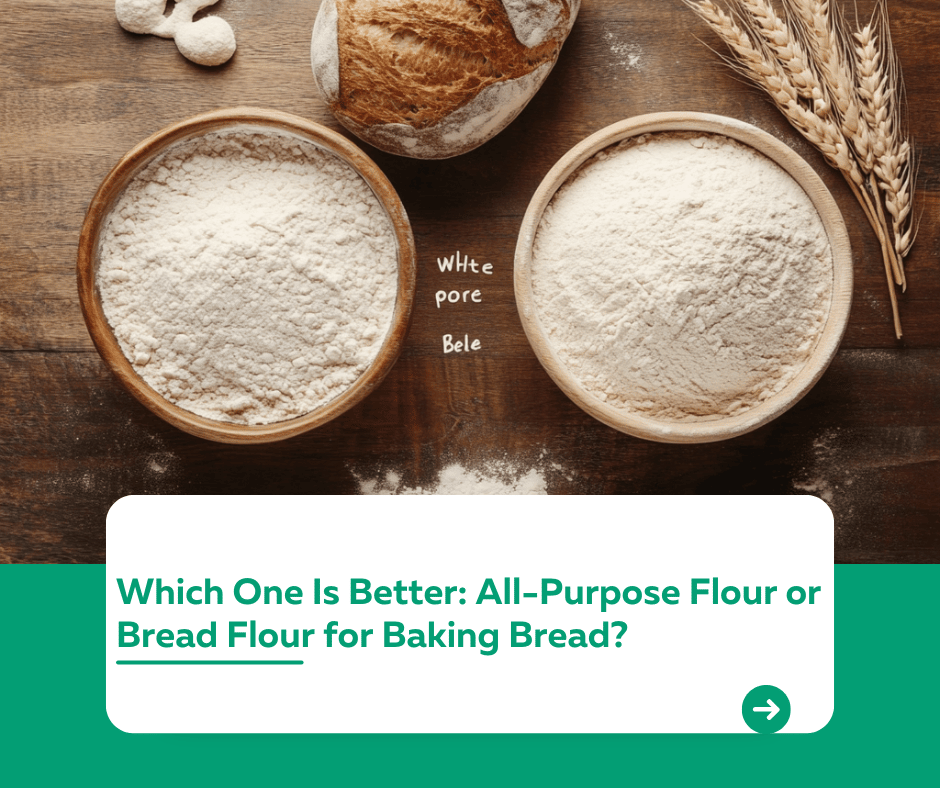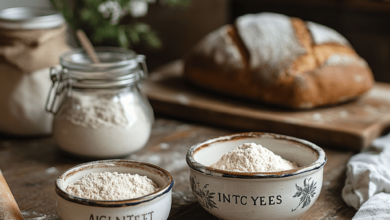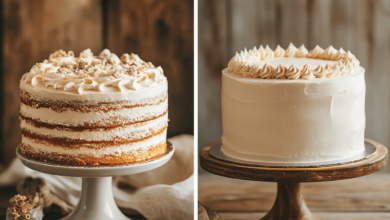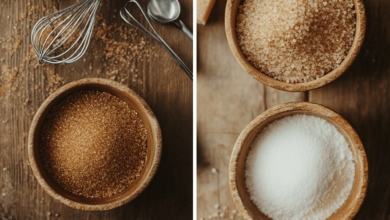Which One Is Better: All-Purpose Flour or Bread Flour for Baking Bread?

Introduction
“Which one is better for baking bread: all-purpose flour or bread flour?”
When it comes to baking bread, the type of flour you choose can make a big difference in the final result. All-purpose flour and bread flour are both commonly used, but they have distinct characteristics that affect texture, structure, and flavor. This guide will help you understand the differences between the two and determine which one is better for your bread recipe.
1. What Is All-Purpose Flour?
All-purpose flour is a versatile flour made from a blend of hard and soft wheat.
- Protein Content: 10–12%.
- Uses: Suitable for a variety of recipes, including cookies, cakes, and some breads.
- Texture: Produces a softer, less chewy bread.
Pros:
- Readily available and affordable.
- Versatile for multiple recipes.
Cons:
- Lacks the higher protein content needed for optimal bread structure.
2. What Is Bread Flour?
Bread flour is made from hard wheat, which has a higher protein content.
- Protein Content: 12–14%.
- Uses: Designed specifically for yeast breads, pizza dough, and bagels.
- Texture: Creates chewy, well-structured bread with a crispy crust.
Pros:
- High protein content supports better gluten development.
- Produces bread with a light, airy texture.
Cons:
- Slightly more expensive than all-purpose flour.
3. Key Differences Between All-Purpose Flour and Bread Flour
| Feature | All-Purpose Flour | Bread Flour |
|---|---|---|
| Protein Content | 10–12% | 12–14% |
| Gluten Development | Moderate | High |
| Best For | Soft breads, cookies, cakes | Yeast breads, pizza dough |
| Texture | Soft and tender | Chewy and structured |
4. When to Use All-Purpose Flour
All-purpose flour works well for:
- Quick breads like banana or zucchini bread.
- Soft sandwich loaves.
- Recipes where a less chewy texture is desired.
Tip: If all-purpose flour is your only option, add vital wheat gluten to boost protein content.
5. When to Use Bread Flour
Bread flour is the best choice for:
- Artisan breads like sourdough or ciabatta.
- Recipes requiring strong gluten structure, such as bagels or pizza dough.
- Breads that need a crispy crust and chewy interior.
Pro Tip: Use bread flour for recipes where structure and elasticity are critical.
6. Can You Substitute One for the Other?
Yes, but with adjustments:
- Using All-Purpose Instead of Bread Flour:
- Add 1 tablespoon of vital wheat gluten per cup of all-purpose flour.
- Using Bread Flour Instead of All-Purpose:
- Be prepared for slightly chewier bread due to higher protein content.
Conclusion
The choice between all-purpose flour and bread flour depends on the type of bread you’re baking. All-purpose flour is versatile and suitable for softer breads, while bread flour provides the structure and chewiness needed for artisan loaves and yeast breads. Understanding their differences will help you make the best choice for your recipe and achieve delicious results every time.
For more baking tips and techniques, visit our Kuestion.com.




